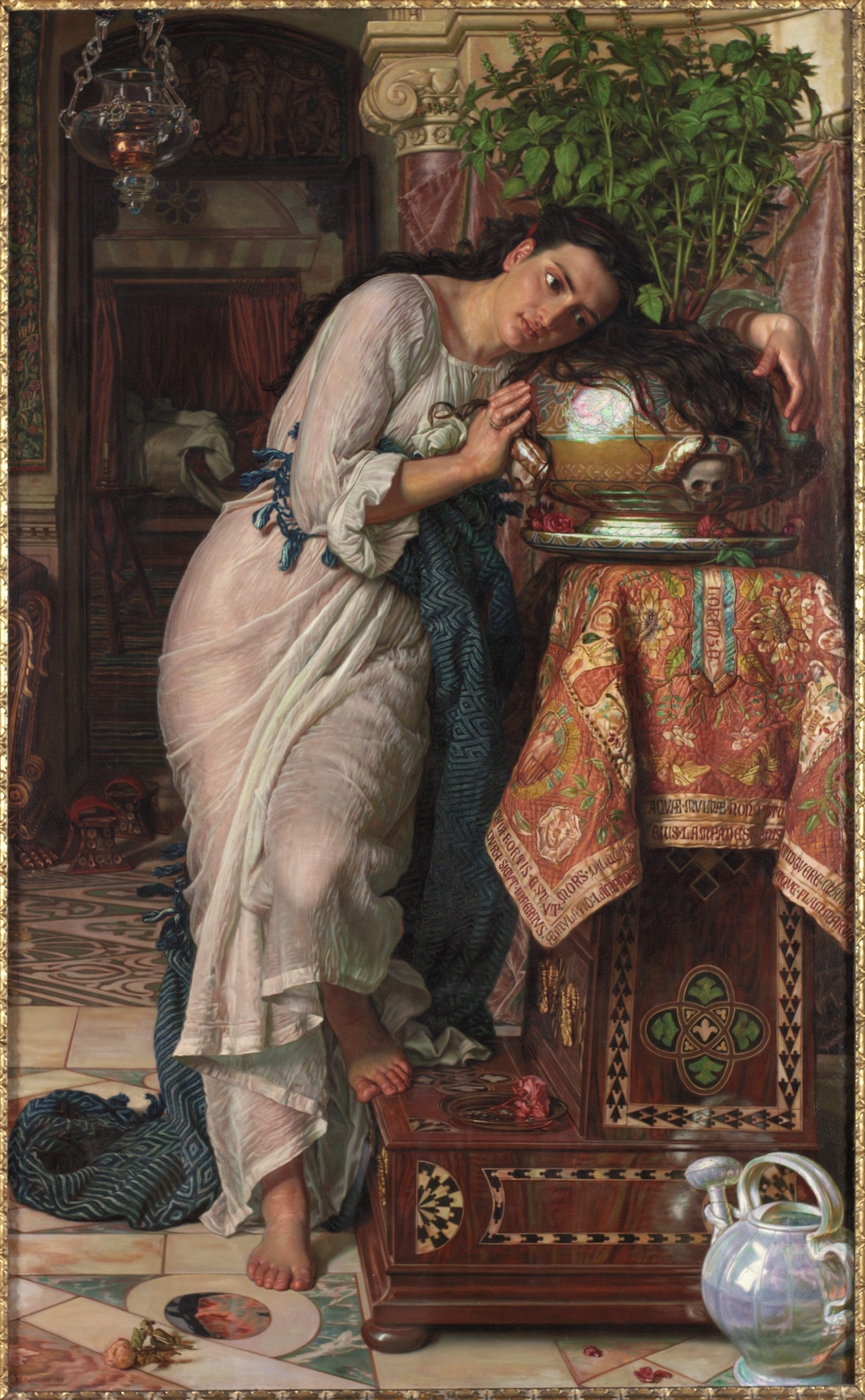From the May 2022 issue of Apollo. Preview and subscribe here.
Elizabeth David had little time for food photography. ‘You can’t do colour pictures of food,’ she told Audrey Withers, her editor at Vogue from the mid 1950s: ‘I think they’re bloody awful.’ That stance softened as David began to collaborate on magazine features with Anthony Denney, but then Denney, alive to detail, was no hack photographer: he had a ‘painter’s eye’, she said. When she came, much later, to prepare new editions of her most-celebrated cookery books for press, there was no question of introducing photography. She looked to Old Masters for fresh illustrations instead.
David’s interest in painting has received little attention. In part, that is because the visual accents associated with her writing were established so early in her career, through the original illustrations to the books that made her name. In their compact exuberance, John Minton’s drawings for A Book of Mediterranean Food (1950) and French Country Cooking (1951) evoke southern Europe as a rediscovered bounty; those that Renato Guttuso provided for Italian Food (1954) have robust, simple compositions that coincide with the authenticity that informs so many of the recipes collected in that book.
To press beyond those waymarkers is to give due attention to David’s final great act, in which she was less a pioneering cookery writer than a determined historian of food. You can sense that transition in Spices, Salt and Aromatics in the English Kitchen (1970), in which historical recipes press against those for modern dishes, and see how it bore fruit in English Bread and Yeast Cookery (1977) and Harvest of the Cold Months (1994), David’s posthumously published study of ice and ice creams. In this context, revamping her early books with historical paintings was a means of redrawing their intellectual territory: of insisting on the longue durée of European food traditions while aligning her younger self with the scholar she had become.
Four redesigned editions were published in 1987–88, each thickly illustrated with its own distinctive selection of paintings. David reworked Italian Food as a coffee-table book with more than 230 images. In a more modest format, she republished A Book of Mediterranean Food, French Country Cooking and Summer Cooking (1955), supplementing the original drawings with around 50 new illustrations in each volume. In this series, the presiding spirit of Mediterranean Food became Luis Meléndez, his Cucumbers, Tomatoes and Vessels (1774), for instance, seeming to invite the preparation of the gazpacho described immediately below it; that of Summer Cooking became Eliot Hodgkin, whose Brioches (1977) hung in David’s own kitchen in Chelsea.
Isabella and the Pot of Basil (1897), William Holman Hunt. Laing Art Gallery

With no text by David to substantiate the image selections, it is perhaps inevitable that these editions tend to be passed over as somehow peripheral to her achievements. Certainly, the books were collaborative enterprises in which David’s longstanding editor, Jill Norman, and various publishers, designers and picture researchers all played their parts. But they reflect David’s knowledge and experience nonetheless. The artist Rebecca John, who researched images for David, recalls her ‘extraordinary eclectic taste’, both in supplying suggestions for illustrations and when it came to whittling down the transparencies John had gathered in image archives. ‘She loved the exquisite,’ says John, drawing attention to works by Hodgkin, Fantin-Latour and the 17th-century Alsatian painter Sébastien Stoskopff. ‘She didn’t like Bonnard, but she said she would tolerate him.’
Jenny de Gex, the picture researcher on Italian Food, has similar memories of the editorial process. That project began with ‘several long sessions in the kitchen at Halsey Street’ before de Gex, armed with ‘about 100’ leads, travelled to the Scala Archives in Florence to conduct further research. David was adamant about including certain images – those of kitchens and cooking utensils from Bartolomeo Scappi’s Opera (1570), for example – and she floated the possibility of others, such as the manuscript illuminations from the Tacuinum Sanitatis and the Theatrum Sanitatis that were integrated into the chapter on herbs. David had a magpie-like memory, and many of her suggestions no doubt reflect paintings seen on trips across France and Italy in search of recipes. Other images were harvested from her large library of historical cookery books and related titles: in her copy of Storia della Gastronomia (1978), for instance, she noted that a Beuckelaer kitchen scene ‘shows what appears to be an aubergine’; the painting reappeared prominently in the revised edition of Italian Food.
These editions make art-historical arguments, however inadvertently, in their emphasis on how pictorial traditions have so often transmitted information about the preparation and presentation of food. They celebrate neglected artists such as Giovanna Garzoni or Giuseppe Recco. But they also have a wit that is in keeping so much of David’s writing – and most notably in the elastic relationship that emerges between recipes and representations. David insisted, says John, on reproducing Holman Hunt’s Isabella and the Pot of Basil (1867) alongside a chapter on fresh herbs. A crop of Bellini’s Supper at Emmaus is embedded between instructions for Ischia anchovies and stuffed sardines. Elizabeth David’s version of art history had its own inimitable flavour.
From the May 2022 issue of Apollo. Preview and subscribe here.


